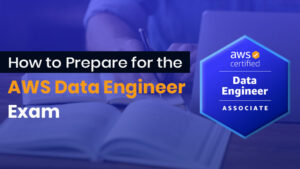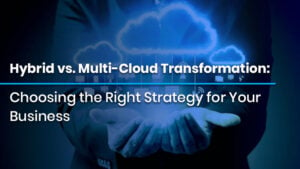
How to Strengthen Security Using CIS Controls and Posture Analysis
How to Strengthen Security Using CIS Controls and Posture Analysis Introduction In the fast-paced and ever-evolving world of cybersecurity, defending digital infrastructure goes far
🔥Premium Monthly Plan – Only $11.99!🔥Hurry! This exclusive deal won’t last long. 👉 Subscribe Now!

How to Strengthen Security Using CIS Controls and Posture Analysis Introduction In the fast-paced and ever-evolving world of cybersecurity, defending digital infrastructure goes far

How to Prepare for the AWS Data Engineer Exam Introduction With the world becoming increasingly data-driven, organizations are depending on cloud-based systems to store, process,

Hybrid vs. Multi-Cloud Transformation: Choosing the Right Strategy for Your Business Introduction In the digital-first economy of today, cloud transformation is no longer a
Table of Contents
Businesses store their vital data and applications in data centers. A network of processing and storage resources forms the foundation of the architecture of a data center, allowing for the delivery of shared data and applications. A data center’s architecture must consider routers, switches, firewalls, storage systems, servers, and application-delivery controllers. This article goes into great detail on data centers.
Today’s data centers are very different from those of prior years. Traditional on-premises physical servers have been replaced by virtual networks that handle applications and workloads across pools of physical infrastructure and a multicloud environment.
Several data centers, the edge, and public and private clouds all have access to and are networked with data today. The data center is required to connect these many places, both on-site and on the cloud. The public cloud is even made up of a number of data centers. Applications hosted in the cloud take advantage of the data center resources of the cloud provider.
Data centers come in a variety of sizes, from a single small server room to large clusters of buildings spread across a large area, but they all have one thing in common: they are vital business assets where businesses frequently invest in and implement the most recent developments in data center networking, compute, and storage technologies.
Compute, storage, and network are the three main categories of components found in data centers. Support infrastructure is crucial to fulfilling a business data center’s service level agreements.
Applications run on servers may use physical, virtual, distributed, containerized, or edge computing model processing and memory dispersed among remote nodes. Processors best suited for the job must be used in data centers; for example, there may be better options than general-purpose CPUs for tackling Artificial Intelligence (AI) and machine learning (ML) difficulties.
The amount of storage space available for local, remote, or combined data backup rises as storage media costs decline. Data access times are getting faster because of developments in non-volatile storage. Additionally, software-defined storage solutions improve staff productivity when operating a storage system, just like everything else.
To link servers to each other and the outside world, datacenter network equipment such as cables, switches, routers, and firewalls are used. When designed and configured correctly, they can handle large amounts of traffic without sacrificing performance. The data center is connected to the internet via core switches at its edge, and a middle aggregate layer connects the core layer to the access layer, where the servers are situated.
One of the main justifications for moving to the cloud is the ease with which virtual cloud DC may be scaled up or down with only a few clicks. Software-Defined Networking (SDN) controls traffic flows in contemporary data centers. On-demand system creation is possible with Infrastructure as a Service (IaaS) solutions hosted on private and public clouds.
Data centers in the enterprise IT world support the following business applications and activities:
The following are the drawbacks of Data centers:
Governments and other organizations established laws on data centers as their size and complexity rose, and they started to contain sensitive and essential information. The four levels or standards that the Telecommunications Industry Association (TIA) created to cover all facets of data center design.
The entry-level capacity level for supporting IT systems for use outside of offices is a Tier I data center. The following are a few specifications for a Tier I facility:
Tier II facilities provide additional cooling components for better maintenance and safety against disruptions. For example, these data centers must have the following:
Tier III data centers provide greater data redundancy; you can maintain or replace equipment without a system shutdown. They also implement redundancy on support systems like power and cooling units to guarantee only 1.6 hours of annual downtime.
Tier IV data centers contain several physically isolated systems to avoid disruption from both planned and unplanned events. They are fault-tolerant with fully redundant systems and can guarantee a downtime of only 26 minutes annually.
AWS has the idea of a Region, which are actual geographical areas where we group data centers. Each collection of logical data centers is called an Availability Zone (AZ). Each AWS Region comprises several geographically distinct, isolated, and physically independent AZs. We designed each AZ to be isolated from the other AZs regarding location, power, and water supply. Each AZ is made up of one or more physical data centers.
The multiple AZ design of every AWS Region offers extra benefits for our clients, such as dependability, scalability, and the lowest feasible latency, in contrast to competing cloud providers, who frequently define a region as a single data center.
AZs in an AWS Region are interconnected with high-bandwidth, low-latency networking over fully redundant, dedicated metro fiber, providing high-throughput, low-latency networking between AZs.
Traffic between AZs is encrypted. The network performance is sufficient to accomplish synchronous replication between AZs.
Predicting the future of data centers is a tricky business. One of the most secure industries out there at the moment, projecting a CAGR of 8% between 2023 and 2030, they are at the center of the digital revolution.
Data center services are in high demand due to technological developments like the growing digitalization of information, the expansion of electronic commerce, and the expanding acceptance of cloud computing. This sector has the potential for significant growth.
Kickstart Your Career in Cloud Computing Today!
Explore Now© 2025 All rights reserved | Privacy Policy | Terms and Conditions | Sitemap | Cookie Policy




